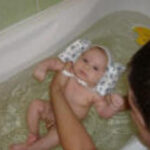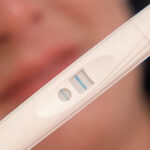Tracking ovulation is one way for a couple to increase their chances of conceiving. Ovulation takes place when an egg is released from a woman’s ovary, and travels to the uterus in preparation for fertilization. If the egg is not fertilized, the mucus that lines the uterus will in preparation for pregnancy sheds causing menstruation. There are ovulation kits available that are used to track the hormonal surge that women experience immediately preceding ovulation. While ovulation kits are effective, they are expensive and not always necessary. If a woman knows what to look for, she can track ovulation without a testing kit.
Ovulation Calendar
An ovulation calendar helps a woman narrow down the window of time she needs to watch for ovulation signs. To make an ovulation calendar, a woman must know the first day of her last menstrual cycle (the day her period started) and the average number of days between her cycles. The length of a menstruation cycle is between 24 and 35 days. The fertile period typically begins six days after the first day of menstruation. After an egg is released from the ovaries, it only lives for 24 hours.
The consistency of the mucus produced in the cervical canal changes just before ovulation occurs. Keeping track of cervical mucus helps a woman know when her chances of becoming pregnant are best. Before ovulation, cervical mucus is clear and slightly stretchy. The mucus will closely resemble raw egg white. Cervical mucus during this stage is less acidic, and helps guide sperm to an egg for fertilization.
Baseline body temperature changes on the day of ovulation. A woman’s body temperature will rise between 0.4 and 0.8 degrees, and watching for a rise in temperature will help a woman track ovulation. Before the fertile period begins, buy a baseline body thermometer at any store that sales pregnancy tests or thermometers. Take a baseline temperature every morning, and plan to have intercourse the day the temperature rises to increase the chances of conceiving.
Ovulation Disruptions
There are many things that can disrupt a woman’s ovulation cycle. Serious illness, and the use of certain fertility medications, sometimes changes the length of menstruation cycles. Not knowing the length of menstruation makes it difficult to track fertility naturally. Stress and poor nutrition also change ovulation, either stopping the cycle all together or making it irregular. Breastfeeding can also prevent ovulation or greatly lengthen the time between cycles.
When to Seek Help
It is not always possible to achieve pregnancy without help. The average couple who are 35 years old or younger should try to conceive for one year before seeking outside help. When the time comes, a woman should visit her gynecologist for a referral to a reproductive endocrinologist (RE). An RE will screen both partners for common physical abnormalities that cause infertility. If an RE is unable to help a couple conceive naturally, in vitro fertilization and other invasive fertility treatments might be needed in order to conceive a baby.






